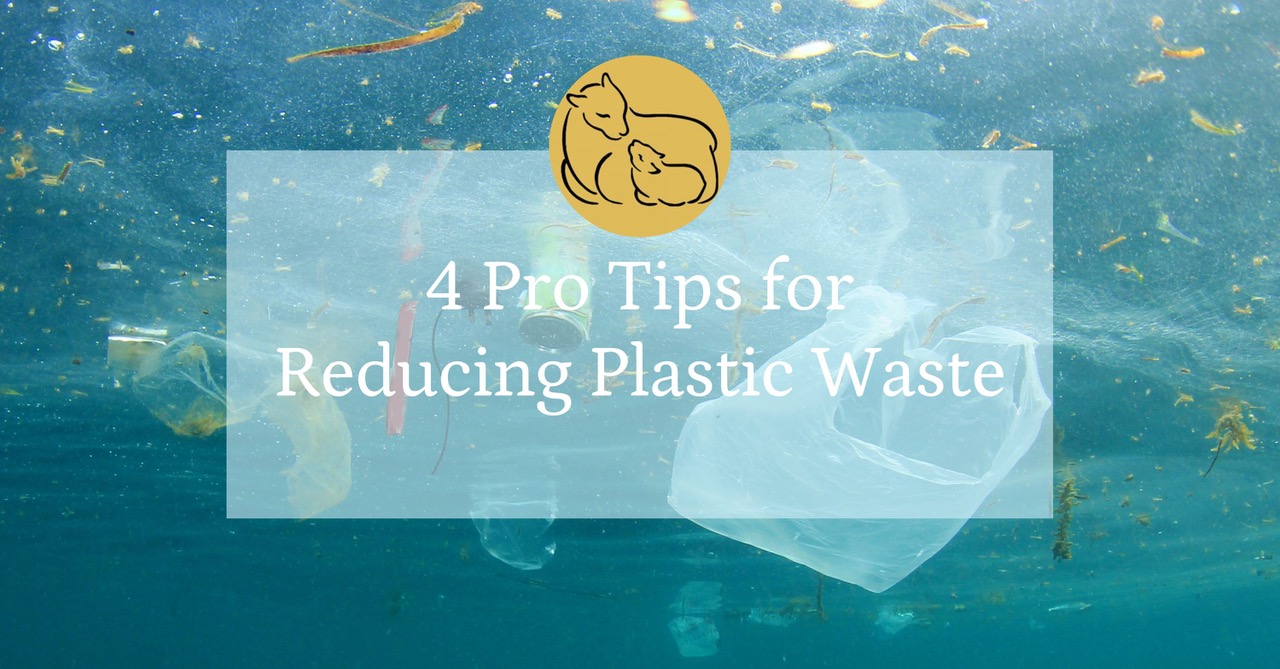4 Pro Tips for Reducing Plastic Waste
By now, most of us are aware that plastics cause serious issues for both our planet and our health. Given the giant scope of the problem, it can feel overwhelming! But every effort we make to reduce plastics in our lives is a step in the right direction.
We recently rolled out our Zero Waste Ewe-initiative® and part of its mission is to help us continue to find alternatives to single-use and disposable plastic products. Here are four quick and easy tips to start living with less plastic.

Bring Your Own Bags
If you’re not already, it’s time to jump on this trend. And they’re not just for the grocery store…bring them along to the drugstore, the hardware store, and anywhere your daily errands take you.
Americans alone are responsible for over 100 billion plastic bags per year, more than 300 per person. They do their job for a few minutes and then last over 1,000 years in landfills, or they float into the ocean where they are often ingested by marine animals, especially turtles. In the 2019 International Coastal Cleanup, 1.9 million plastic shopping bags were recovered from beaches and waterways.
Phew—that’s depressing! Help out by stashing reusable fabric bags in your car or purse, ready at a moment’s notice. And don’t forget about alternatives for produce and bulk item bags as well. Bonus points if those bags are made out of biodegradable fabrics as well!
BYO Bottles, Mugs, Containers, & Utensils
If you’re health conscious as well as environmental, this one is important. Many plastics contain chemicals that are known to be harmful to human health like bisphenol A (BPA) and phthalates. We consume them because these chemicals leach into food and liquid from the containers they’re in. And while the awareness around BPA has nudged plastics manufacturers to find alternatives, there are still other chemicals that interfere with our normal hormonal functioning, not to mention the functioning of animals when these plastics find their way into their ecosystems.
Unfortunately, paper coffee cups and takeout food containers, while somewhat better than plastic or styrofoam, are still lined in plastic to keep food hot and prevent leakage. They’re also not recyclable. Find local cafés and restaurants that will allow you to fill your own reusable coffee mugs, water bottles, and takeout food containers. Be sure to bring along reusable utensils and straws! And a cloth napkin to help the trees too. You can also make sure you have sets handy at the office, in the car, and anywhere else you might need them.
Buy Fresh Food & Make it Yourself
Food packaging is a major source of landfill trash—plastic and otherwise. Here’s another area where you can fulfill several different goals at once!
We’ve all heard about the benefits of “shopping the perimeter” of a store to avoid all the processed foods in the center, and this rule also helps us reduce packaging waste if we’re bringing our own containers and bags.
Another great tip is to buy direct from farmers and ranchers in your area—support your local Farmers’ Markets and CSA food delivery services. Buy your bread from a local bakery, coffee beans from a local roaster, and whatever else you can find in your region. You’ll be contributing to your local economy while you’re at it!
Our modern lives are definitely made easier with convenience foods, especially for working families. It’s not always possible to make everything from scratch. Start by spending some time cooking big batches for the week and making sure you’ve got leftovers for your workday meals. It can be an adjustment to go without some of the foods we’ve grown accustomed to having around, but spending a little time making our own snacks and meals instead of absent-mindedly grabbing them off a shelf is a big help for our health and planet.
Choose Non-Plastic Packaging
Packaging of household items is another place to look for reducing plastic:
- Personal Care Products— There’s been a lot of improvement here over the years. All sorts of items come in plastic-free packaging these days, from makeup to deodorant to toothpaste to shampoo. Many of these products are returning to a form without water added—think soap and shampoo bars, powdered or tablet toothpaste, and mineral powder makeup. Added bonus of making it easier to carry-on your personal care products and get them through TSA’s liquids limitations! Have you tried our locally-made soap wrapped in beautiful felted wool yet?
- Cleaning Products— Think to yourself, “How would grandma do it?” There was nothing she couldn’t clean with vinegar, baking soda, and hot water. Look for alternative packaging or buy in bulk at the store. Companies like Grove Collective are making it easier than ever to be gentler on the planet and reduce our plastic usage.
- The Laundry Room— Today’s modern clothes that use washing machines and dryers don’t really need all the fancy laundry treatments they once did. Fabric softeners, static preventers, and fancy stain removers have clever, more ecologically-friendly replacements. Take our wool dryer balls for instance! Look for dry powdered laundry detergent at your store’s bulk section and take it home in your own container, or on the shelf in a paper box. Also consider adding measures to prevent synthetic fabric microplastics from escaping into waterways.
Doing our part needn’t be an exercise in suffering or guilt. Find a few plastic-free tips that grab you and commit to those. When they become second nature, pick up a few more. Follow us on Instagram and Pinterest for more #zerowaste and #plasticfree tips!

